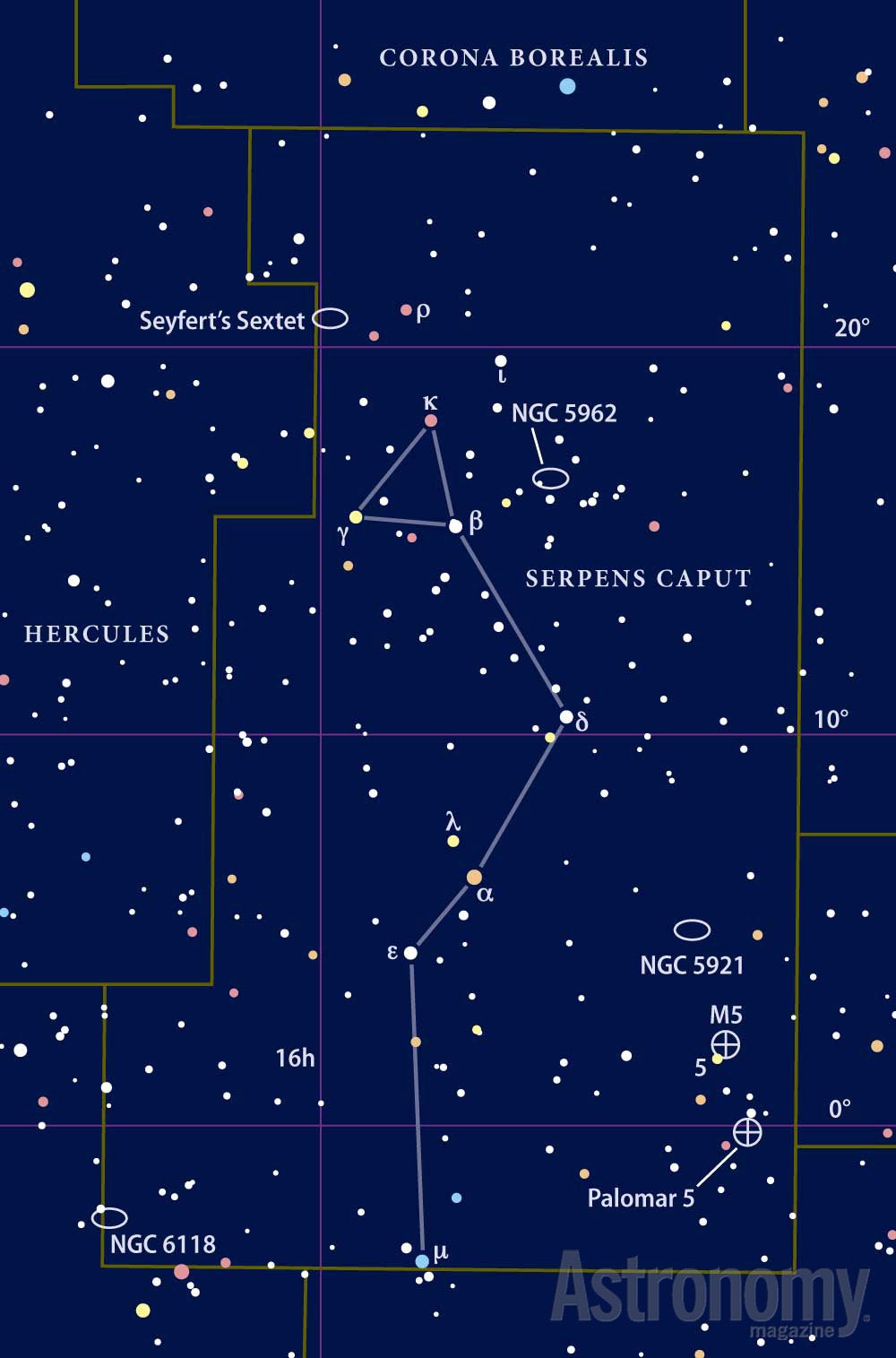
Expand your observing at Astronomy.com
StarDome
Check out Astronomy.com’s interactive StarDome to see an accurate map of your sky. This tool will help you locate this week’s targets.
The Sky this Week
Get a daily digest of celestial events coming soon to a sky near you.
Observing Talk
After you listen to the podcast and try to find the objects, be sure to share your observing experience with us by leaving a comment at the blog or in the Reader Forums.
Each week, Astronomy magazine Senior Editor Michael E. Bakich, a master at explaining how to observe, posts a podcast about three or more objects or events you can see in the sky.
Targets for May 31–June 7, 2012
Small telescope: Open cluster NGC 5822
Large telescope: Spiral galaxy NGC 5962
Large telescope: Spiral galaxy NGC 5965
Howling with stars
This week’s small-telescope target is open cluster NGC 5822 in the constellation Lupus the Wolf. You’ll find it 2.6° south-southwest of magnitude 3.4 Zeta (ζ) Lupi. Easily visible to the naked eye from a dark site, this magnitude 6.5 cluster explodes with detail through binoculars or any telescope.
A 4-inch instrument at a magnification of 100x shows 50 stars. Don’t look for a center because the stars are evenly distributed across 35′. That’s an area 27 percent bigger than the Full Moon. Larger apertures add to the star count.Head to Serpens
This week’s first large-scope object is spiral galaxy NGC 5962 in the constellation Serpens. Specifically, it lies in the Caput — or head — section of that star pattern. It glows at magnitude 11.3 and measures 2.6′ by 1.8′.
You’ll find this galaxy in northern Serpens, just west of the three stars — Beta (β), Gamma (γ), and Kappa (κ) Serpentis — that form the Serpent’s head. Point your scope 2.6° west-northwest of Beta Ser.
This galaxy exhibits “flocculent” spiral structure, meaning its arms appear to be broken up into many small pieces in contrast to the “grand design” spirals with well-developed arms.
At magnifications of 150x and higher, you’ll notice NGC 5962’s broad central concentration. A sharp, bright nucleus some 15″ in diameter lies at its very center.Dragon spiral
This week’s second large-telescope target is another spiral galaxy, NGC 5965 in Draco the Dragon. This magnitude 11.7 object sits 2.6° south-southeast of magnitude 3.3 Iota (ι) Draconis.
Through a 12-inch telescope at 200x, this galaxy is a classic edge-on spiral, and it appears more than four times as long as it is wide oriented northeast to southwest. Its given measurements are 5.2′ by 0.7′.
Smaller scopes don’t show this length-to-width disparity as well because the spiral arms fade rapidly as they taper away from the core. The northeastern arm outshines the other by quite a bit.
And, if I may, I’d like to say a quick but heartfelt “thank you” to fans of these podcasts: This week’s installment is the 200th since I began this series nearly four years ago.
I’ve never repeated an object on purpose, and I’m nowhere near out of them yet. So keep listening and, even more importantly, keep observing.









